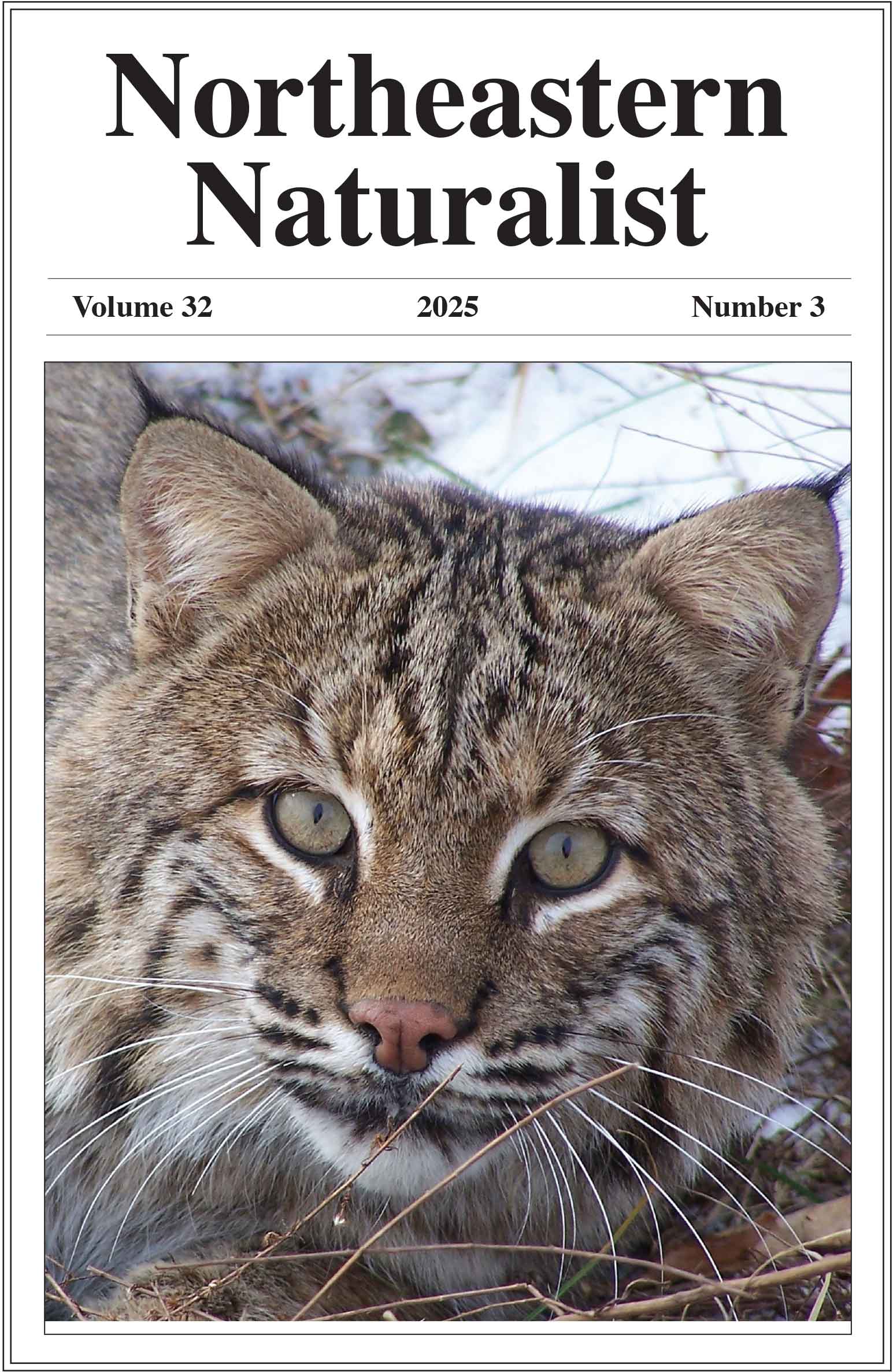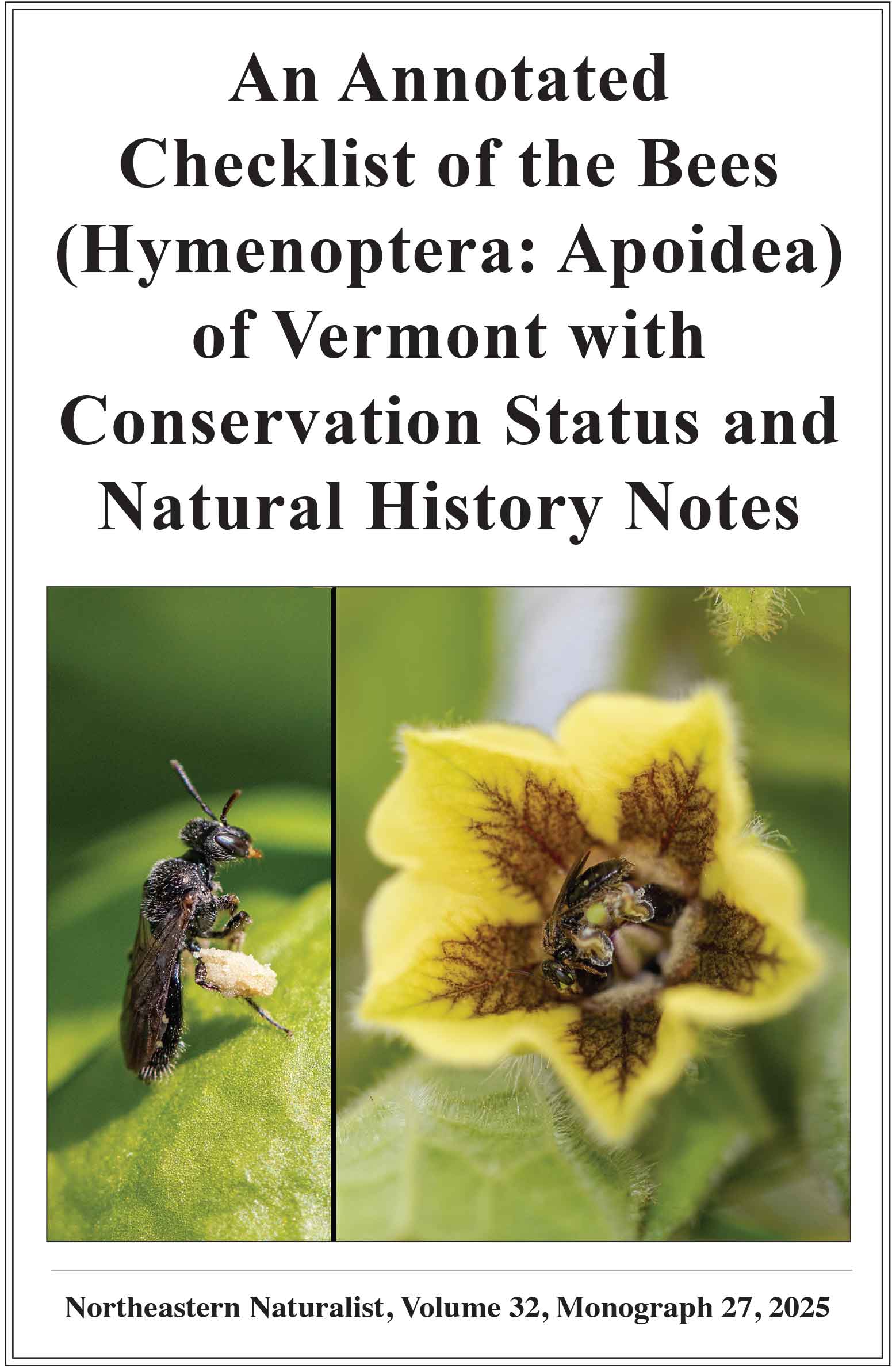A Remarkable Specimen Record of an Apparently Wild Gray Wolf (Canis lupus) from Upstate New York
Jeremy J. Kirchman1,*, Robert Feranec1, Joe Butera2, and Bridgett M. vonHoldt3
1New York State Museum, 222 Madison Avenue, Albany, NY 12230. 2Northeast Ecological Recovery Society. Floral Park, NY 11002. 3Department of Ecology and Evolutionary Biology, Princeton University, Princeton, NJ 08544. *Corresponding authors.
Northeastern Naturalist, Volume 32, Issue 3 (2025): 455–471
First published early online: 28 September 2025
Abstract
Canis lupus, sensu lato (Gray Wolf, including Eastern Wolf, collectively “Wolves”) was extirpated from the eastern United States by the end of the 19th century, but lone individuals have occasionally dispersed far from remnant breeding populations in forested areas of Canada north and east of the Great Lakes in Ontario and Quebec. Identification of Wolves outside of core breeding areas in eastern North America is complicated by the history of hybridization and back-crossing with Canis latrans (Coyote), which expanded out of mid-western North America in the early–mid-20th century. The species-level taxonomic uncertainty that results from this history of introgression among canid lineages is an ongoing challenge for government agencies and conservation organizations tasked with protecting Wolves. We summarize the known specimen records of Wolves taken south of the St. Lawrence River, and report morphological, genetic, and stable-isotope analyses of a Wolf shot by a hunter in Otsego County, NY, in December 2021. Skull measurements and the mass of this individual place it well above the body sizes observed in a sample of eastern Coyotes with high levels of Wolf ancestry. Principal component analysis and supervised clustering based on 31,522 SNP loci across the genomes of 435 canids (Wolves, Coyotes and Canis lupus familiaris [Domestic Dog]) placed the new specimen among Gray Wolves sampled from the western Great Lakes region, and found that it had an exceedingly high assignment probability (Q = 0.999) to the Great Lakes Gray Wolf genetic cluster. Stable carbon isotopes measured from hair, tooth, and bone samples indicate that the canid subsisted on a diet of wild foods at all stages of its life. Our analyses add to the growing body of evidence of wild Wolves occasionally dispersing long distances from core breeding areas to localities east of the Great Lakes and south of the St. Lawrence River.
![]() Download Full-text pdf (Accessible only to subscribers. To subscribe click here.)
Download Full-text pdf (Accessible only to subscribers. To subscribe click here.)
Access Journal Content
Open access browsing of table of contents and abstract pages. Full text pdfs available for download for subscribers.
Issue-in-Progress: Vol. 32(4) ... early view
Check out NENA's latest monograph and Special Issue:













 The Northeastern Naturalist is a peer-reviewed journal that covers all aspects of natural history within northeastern North America. We welcome research articles, summary review papers, and observational notes.
The Northeastern Naturalist is a peer-reviewed journal that covers all aspects of natural history within northeastern North America. We welcome research articles, summary review papers, and observational notes.